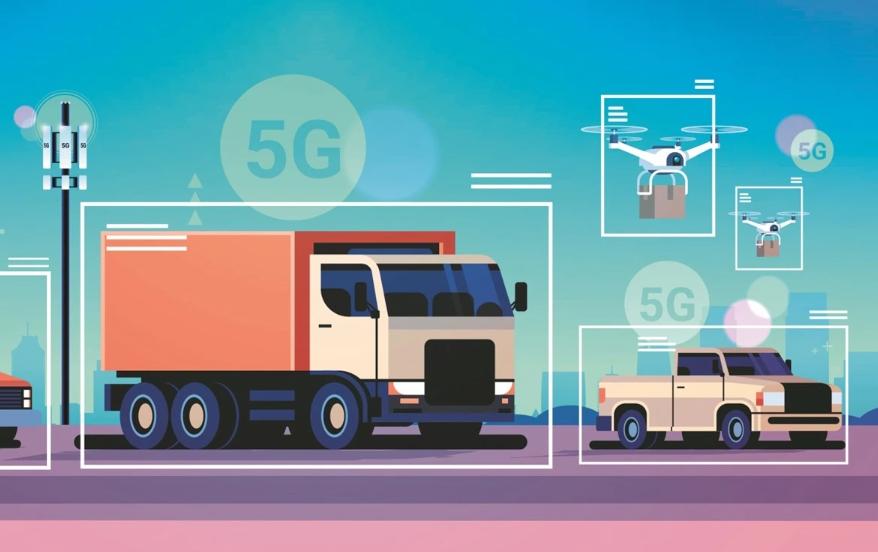
5G technology will bring more security and economy to cargo transport
August 30, 2022Monitoring will prevent drowsiness accidents and tends to reduce maintenance costs
Increased security is a long-awaited benefit of 5G in fleet management. In this way, high-speed data transmission technology will favor real-time video monitoring of drivers, with the potential to avoid accidents due to drowsiness or distraction, for example.
What is expected, when all features are implemented, is that 5G technology will bring security and economy to cargo transport. However, transport and fleet management experts also expect reduced maintenance costs.
“Video tracking will make it much easier to identify the fact itself, whether the driver is smoking or tired. In this way, when there is a greater area of coverage of the 5G signal, it will be possible to effectively see what is happening”, says Fábio Acorci, corporate commercial director at Ituran.
Marcel Zorzin, operational director of Zorzin Logística, expects, in addition to videos, telemetry that is richer in information. “With 5G, monitoring the driver will be similar to that of an instructor riding in the passenger seat”, he says, referring to the possibility of monitoring, online, the use of the clutch, sudden braking, entry into curves and eventual speeding.
“For those who transport chemicals, like us, the biggest concern is safety.” Zorzin also believes in reducing fuel consumption based on this monitoring of drivers.
Side dish
Daniel Moreira, director of customer services at Iveco, recalls that the higher speed and lower latency (response time), compared to 4G, will allow immediate monitoring of the driver and also the use of the engine, its temperature and rotations.
“In addition to safety gains, there will be more time dedicated to freight and less to vehicle maintenance. It will increase productivity and facilitate the day-to-day fleet management.”
At Scania, the executive Felipe Angelini, responsible for Connected Solutions, recalls that the use of 5G began a long time ago in Europe, and guarantees that communication will become much better with it.
“The increased data traffic will allow trucks to run very close together, in convoy, but without risk to safety and with a significant reduction in fuel consumption due to less aerodynamic drag.” He recalls that 5G brings the transport sector closer to autonomous driving.
Ituran’s Acorci highlights another benefit of video footage. “In service vehicles, telephone companies or power utilities will be able to monitor whether the operator is following regulations and using protective equipment based on cameras installed outside.”
For Marcel Zorzin, it will improve the carrier’s customer service. “With the more precise location of the truck, it will be possible to inform the exact moment of arrival of the cargo and reduce the time of low delivery of the delivery in the system.”
Metropolises will benefit first
According to the Ministry of Communications, fifth-generation mobile internet will be available in 25 of the 27 capitals by the end of this month. And it is natural that the dissemination of technology occurs, first, in metropolitan regions, where there are more consumers.
“With the growth of electronic commerce and the fact that the largest volume of transactions of this type takes place in large capitals, the presence of the 5G network in these areas is excellent for those who work with transport and logistics in this segment”, guarantees Márcio Toscano, director of Autotrac marketing.
For the director of Zorzin, the deployment of antennas on the roads will be an essential point. “There are still many areas with no signal, like on the way from São Paulo to Curitiba. In the region of the Port of São Sebastião (SP), the signal is also bad”, recalls the executive. “In some parts of the country, communication is only satellite.”
What changes in equipment
The updating of equipment installed in vehicles does not follow a pattern or recipe among the interviewees. Márcio Toscano, from Autotrac, says that most of the trackers installed in the country have 2G and 3G technology, which will have to be updated to obtain the benefits of 5G. the 4G network in the CAT-M standard, compatible with the 5G network of most operators in Brazil.
At Scania, according to Felipe Angelini, there is still no definition of the strategy. “The modules installed in our trucks enable 4G technology. There will likely be the module upgrade or replacement,” he says.
At Iveco, Daniel Moreira informs that, in principle, there will be no change in the installed equipment. What should change will be the services and solutions that the automaker offers to customers.